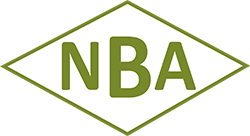Calving difficulty in beef cattle by Simon Marsh, Beef Cattle Specialist, Harper Adams University
Category: Suckled Calf Production
I recently came across an excellent review article on calving difficulty written by William Herring of the University of Missouri. Some of the key features are précised and summarized as follows:
Calving difficulty (dystocia) can increase calf losses, cow mortality and veterinary and labour costs, as well as delay return to oestrus and lower conception rates.
In two studies at the US Meat Animal Research Centre (MARC) in Nebraska, calf losses within 24 hours of birth averaged 4% for those born with little or no assistance compared to 16% for those requiring assistance. Calf mortality increased by 0.35% for every 0.45kg of increase in birth weight.
In a Hereford herd at the Montana Experiment Station, 57% of all calf losses were reported to be due to dystocia.
Researchers at MARC noted that the percentage of cows detected in oestrus during a 45 day artificial insemination period was 14% lower in those requiring assistance than those calving with no difficulty. Conception to AI was 6% lower in cows experiencing dystocia than in those with no dystocia. Pregnancy rate after the entire breeding season (70 days) was 16% lower in cows that had been assisted. At Montana the pregnancy rate among cows that had cesareans was 26,2% lower than herd average.
It is generally considered in the UK that calving difficulty is mainly influenced by the breed of bull, the bulls EBVs and cow condition score. However there are many other factors that influence dystocia which include the following: age of dam; calfs birth weight; sex of calf; dams pelvic area; dams body size; gestation length; dams genotype; nutrition of dam; time of feeding; shape of calf; position or presentation of foetus and of course other unknown factors!
The article by William Herring is on the NBA website (go to Resources>Technical Information>Suckled Calf Production) which gives extensive detail on all of the above and is well worth a read. On the subject of breed comparisons it must be stated that the data is for American bred cattle which can differ significantly from British bred cattle. With regards to nutrition there is some very interesting information on feeding different levels of energy and protein prior to calving which is worth looking at. It might surprise a few readers!
A summary of the article is as follows:
- Mate yearling heifers to low-risk bulls.
- Feed pregnant heifers adequately; do not under or overfeed.
- Feeding the cows in late evening may cause most of them to calve in the daytime.
- Give first calved 2 year heifers extra attention at calving.
- Know when and how to give assistance and when to consult a vet.
- Within a herd, select replacements from among the larger (older and growthier) heifers.
- For long term progress in a beef herd select sires having above average EBVs for Calving Ease Daughters.
For further details see the below file.

